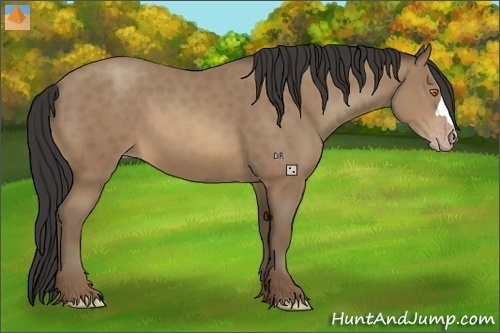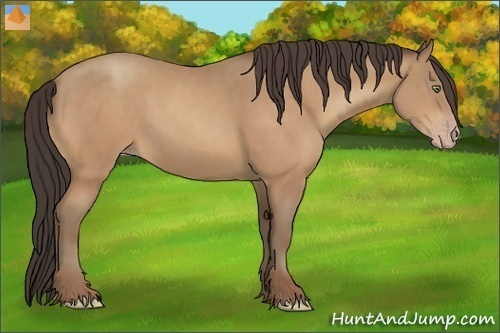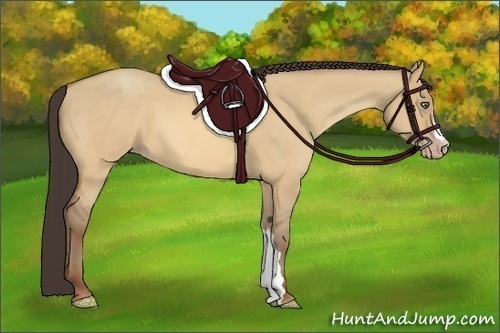X
HGG Community Forums
Log In to HorseGeneticsGame
HGG Community Forums
Join our discord server!
Howdy, Stranger!
It looks like you're new here. If you want to get involved, click one of these buttons!
Categories
- All Discussions68,241
- Announcements356
- HJ2 Discussion67,060
- ↳ New Member Introductions569
- ↳ Help me out3,469
- ↳ Horses For Sale and Auction12,515
- ↳ Breeding Ads and Sales3,456
- ↳ Herd Helper39,570
- ↳ Bug Discussion120
- ↳ Repair Log12
- General Discussion825
- ↳ Saddle Sisterhood32
- ↳ Games, Contests and GiveAWays54
- ↳ Genetics245
In this Discussion
- Ammit March 2018
- ConfluenceFarms March 2018
- CrayonBox March 2018
- CrewCut March 2018
- Goliath March 2018
- Haltanny March 2018
- JheydaStables March 2018
- ObsidianKitsune March 2018
- Puissance March 2018
- Ren March 2018
- RKO March 2018
Who's Online (0)
Simplified Genetics Guide (Discussion)
-
Genetics Decoded
Information
For the full up to date guide please follow this link. The guide moved to allow for expansion/updating of the guide as the word limit was reached too quickly with the first and comments were already in place. :)
This guide may not be kept up to date but all discussions/questions/comments can take place here.Words To Know
Phenotype - Observable (seen) characteristics or traits
Dominant - Expressed in the phenotype over recessive
Recessive - Expressed only when inherited from both parents (Masked if dominant allele is present)
Heterozygous - Having one dominant and one recessive gene
Homozygous - Having two of the same genes (both dominant/both recessive)
Incomplete Dominant - The expressed trait is a combination of the phenotype of both alleles.EE - Black(Dominant) and Red Pigments
E - dominant and produces both black and red pigments.
Colors produced can include: Black, blue, bay, buckskin, grullo, brown
e - produces red pigment only. If recessive ee...
Colors produced can include: chestnut, red dun, palomino, liver chestnut, cremelloAA - Bay (Dominant)
A - dominant, restricts black pigment
a - non-bay, fully black
A+ (wild bay) - Masks all (reduces black points)
AA (classic) - Masks a and t
At (brown) - masks a (heavy black remains on body)
aa (black) - masked by all aboveCC - Cream (Cr) and Pearl (Prl)
Dilution genes that are more noticeable on red pigment.
C cr - Cream (Incomplete Dominant)
When heterozygous, pigment become paler/more yellow.
Red → palomino
Bay → buckskin
Black → smokey
When homozygous, pigment is greatly reduced/soft cream throughout with blue eyes.
Red → cremello
Bay → perlino
Black → smokey cream
C prl - Pearl (Recessive)
When heterozygous it is not noticeable phenotypically (carried only)
When homozygous both red and black pigments are diluted.
The coat develops a metallic sheen.
Blue eyes turn green instead.
**Pseudo Double Cream** - If carrying one copy of cream and one copy
of pearl (CCr/CPrl) horses will look like a darker version of homozygous cream horses.DD - Dun (Dominant)
D - dun
d - no dun
Dilution gene that affects both red and black by diluting the base body coat. A dun horse will always have a dorsal stripe with darker legs +/- horizontal striping. They may have a darker mane, tail, face, and ear tips. Other mottling or smokey marks may appear.GG - Gray (Dominant gene that, if present, will express over other colors)
G - gray
g - no gray
Causing a gradual fading of color/removal of pigment - these horses often turn white over time.FF - Flaxen (recessive)
F - no flaxen
f - flaxen
Flaxen is a recessive gene that requires homozygous ff to express and only shows on red based horses.SS - Sooty (Incomplete dominant)
Affects both red and black pigments.
S - no sooty - bright form
S sty - darkens coat, homozygous causes more darkening than heterozygous. May add dapples.
S+ - sooty plus adds the most darkening, homozygous causes more darkening than heterozygous. May add dapples.
**DP - Dense Pheomelanin (Incomplete dominant)** - affects the red pigment only and makes it darker. This is a hidden gene that cannot be tested for. The color liver happens when there are at least 3 darkening genes present.PP - Pangere (Dominant)
P - pangere
p - no pangere
Pangere lightens the pigment in specific areas (muzzle, flanks, +/- legs) and only affects red pigment to any significant amount.ZZ - Silver (Dominant)
Z - silver
z - no silver
Silver only needs one copy to express. Causes the mane and tail to lighten and dilutes the body, may also cause dapples. Silver only alters black pigmented horses (EE/Ee) and has no effect on red horses (ee).ChCh - Champagne (Dominant)
Ch - champagne
ch - no champagne
A dilution gene that lightens the base coat color and always expresses if there is one copy of Ch.
Classic - uniform black horses dilutes to classic champagne
Gold - chestnut base dilutes to gold (usually flaxen mane/tail)
Amber - bay dilutes to amber
Sable - brown dilutes to sableSaSa - Satin (Recessive)
Sasa - does not show with one copy of sa, carrier only
sasa - satin
Satin causes light to refract differently off the hair causing a satin sheen.KitKit - Tobiano/Roan/White spotting
The Kit genes encompass quite a few different phenotypes please use the search horses function for more examples.
Kit to - tobiano (4 white legs + rounded white spots on body)
Kit r - roan (even mixture of white and pigmented hairs)
Kit w - white 1 (large amounts of white)
Kit w2 - white 2 (large amounts of white)
Kit w3 - white 3 (mottled white)
Kit w8 - white 8 (mottled white)
Kit w10 - white 10 (mottled white splash look)
Kit w20 - white 20 (modifier gene - increases white and can change patterns when paired with some other genes)
Kit m - white M (large ‘spots’ of color on a mostly white body)
Kit sb1 - sabino 1 (irregular white body patches when heterozygous, all white if homozygous)
Kit sb2 - sabino 2 (irregular white patches)
**KP - Kit Promoter (recessive) - a hidden related gene that must have 2 KIT (any mutation) and 2 recessive KP to express.**SpSp - Splash
Adds white splash (dipped in white look with varying amounts of white)
Sp s - splash
Sp s3 - splash 3 (rarely available in the GMT lab)
Sp M - macchiato (fantasy gene)PAX3PAX3 - Splash 2
PAX3 C70Y - splash 2, available in the GMT lab, adds white.LL - Appaloosa
L lp - Expresses appaloosa. If homozygous guaranteed to throw appaloosa foals.
**SF - Snowflake (recessive) - a hidden related gene that requires at least 1 Lp and 2 recessive SF to express.**ECA3P - Blanket/Leopard
ECA3P PATN1 - heavily promotes white blanket markings. Homozygous PATN1 usually have very large blankets and may be full leopards. Needs appaloosa gene (L lp) to express.RbRb - Rabicano
Rb - Will express if one copy of Rb causing white hair along the tail head and flanks often forming distinct stripes. The mode of inheritance is not well understood.OO - Frame
Olw - Modifier gene that causes pigment loss that produces white markings. This can work with other genes to modify white patterns.
If homozygous (OlwOlw) causes a lethal white overo (fatal foal).
**The exception to this rule are the Rank Special Freaky Friday horses obtained through the herd helper who are homozygous for frame.**GP - Gulastra Plume (recessive)
**Causes pigment loss in the tail and occasionally the mane. Must have at least 1 E (black) and at least 1 A (bay) A+/A/At.**WF - White Factor
The more white spotting mutations a horse has the less pigment that pushes against the white areas. In real life this is controlled by a complex combination of genes. In the game, it is currently simplified to a numerical value of None, Minimal, Light, Medium, Large, or Extensive.ID: 40723 -
Thanks for doing this, I'm sure a lot of people will find it helpful!
Under Agouti, you have Aa as Black, you want aa.
It might be worth mentioning that het Llp without a patterning gene gives you solid varnish, and that homozygous Llp produces fewspots. And maybe mention sneaky sneaky snowflake? -
Thank you for this
-
Thank you for posting this :)
-
First, this is very well written. It gives the necessary information without a huge biology lesson that often intimidates beginners. Well done!
I have a few points I will PM you about, nothing serious. :)#28036 -
Nicely done.
Sable is champ on brown.
___________
Need to contact me? Read this first.
http://www.huntandjump.com/forum/discussion/3/how-to-get-help-from-an-administrator -
Thank you for sharing your work.
Sable is Champagne on a Brown base but it may be worth noting that the game doesn't distinguish between Sable and Amber. -
@CrayonBox Yes, the game does distinguish between sable and amber.

G2 DP Louie Sable 538
G2 DP Louie Amber 537#28036 -
The game acknowledges Sable but does not consistently distinguish Sable from Amber. This mare is one of several created under a herd helper and tattooed Sable that is actually an Amber.
Do a search by the Sable Champagne tattoo, and it's Ambers all the way down.
Dun Perignon -
Thank you to those who have commented and given or pointed out suggestions/errors/additions.
I updated the guide as per most of the recommendations. However, I have found that I have used up my allotment of words for a post to have so had to be a little picky with what was added. Hahah. Further updates will either need to be in a separate reply or I'll need to redo this and save a couple more posts directly after mine to expand upon this. ;)ID: 40723 -
I've gone ahead and moved the guide to its own page but would love for this one to remain as a discussions thread. I love seeing the examples you are posting and I think discussion and examples help everyone to learn!ID: 40723
-
On the other page, you say that under dp "It requires 3 darkening genes to express" before any mention of live or chocolate. This makes it sound like dp requires 3 darkening genes to express, when it darkens rid pigments all on it's own.
Producer of Volcanic Glass Drafts. Lapisobsidianus.
Prices are almost always negotiable. -
Good catch. I've changed it to the following which hopefully makes more sense.
A related hidden gene that affects the red pigment and makes it darker.
For Liver or Chocolate to express it requires 3 darkening genes,
any combination of 2 sty/s+ AND at least 1 copy of DP.ID: 40723 -
well, you don't need two copies of sty/s. Probably better to just phrase it as "For Liver or Chocolate to express it requires 3 darkening genes,
any combination of sty/s+ AND DP." ?Producer of Volcanic Glass Drafts. Lapisobsidianus.
Prices are almost always negotiable. -
You could also link it to the Ninja Liver guide: http://hj2.huntandjump.com/forum/discussion/51257/the-ninja-liver-chart#Item_8

-
Done and done, DP still sometimes makes my head spin (but I love it so!).ID: 40723
-
@CrewCut that is an error in herd helper tattoos. "Dark Amber Champagne" gets a sable tattoo. "Dark Bay" is tattooed brown. "Dark Silver Bay" is silver brown tattooed. It's not the game being inconsistent on distinguishing between them, it's just incorrect tattoos on some herd helpers.#28036Thanked by 1Ammit
-
It's because those tattoo names predate the addition of the brown gene into the game.
___________
Need to contact me? Read this first.
http://www.huntandjump.com/forum/discussion/3/how-to-get-help-from-an-administratorThanked by 1Haltanny -
I don't breed for or away from it, just curious; what is not understood about the inheritance of Rabicano?More power!
-
Absolutely nothing is understood about. I think it's Florida U that just announced they where taking DNA samples last month to start looking into it. Zero research has been done on the gene if it even is a single gene.
___________
Need to contact me? Read this first.
http://www.huntandjump.com/forum/discussion/3/how-to-get-help-from-an-administratorThanked by 1ConfluenceFarms -
It's not the game being inconsistent on distinguishing between them, it's just incorrect...
Semantics. The colors are inconsistently labeled. Or the game is consistently incorrect. It's worth knowing before you pour Hbs into herd helper creates for a particular color, that you aren't going to get the promised color. -
The name of the herd helper is correct, only the tattoo is wrong. So that isn't happening at all. This is rather off topic, if you want to report the for a fix there is a typo log in the bug section. :)
___________
Need to contact me? Read this first.
http://www.huntandjump.com/forum/discussion/3/how-to-get-help-from-an-administratorThanked by 1Haltanny






















